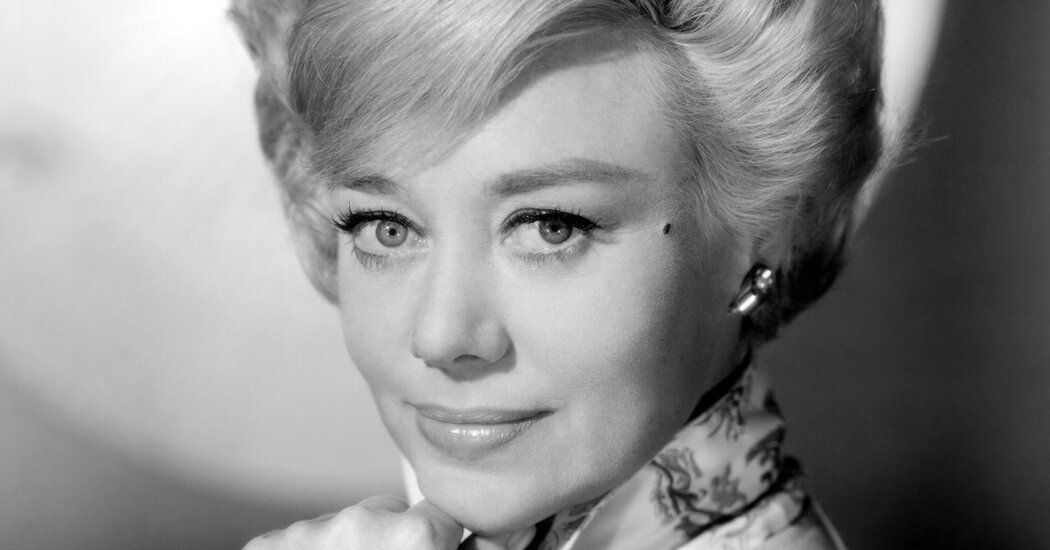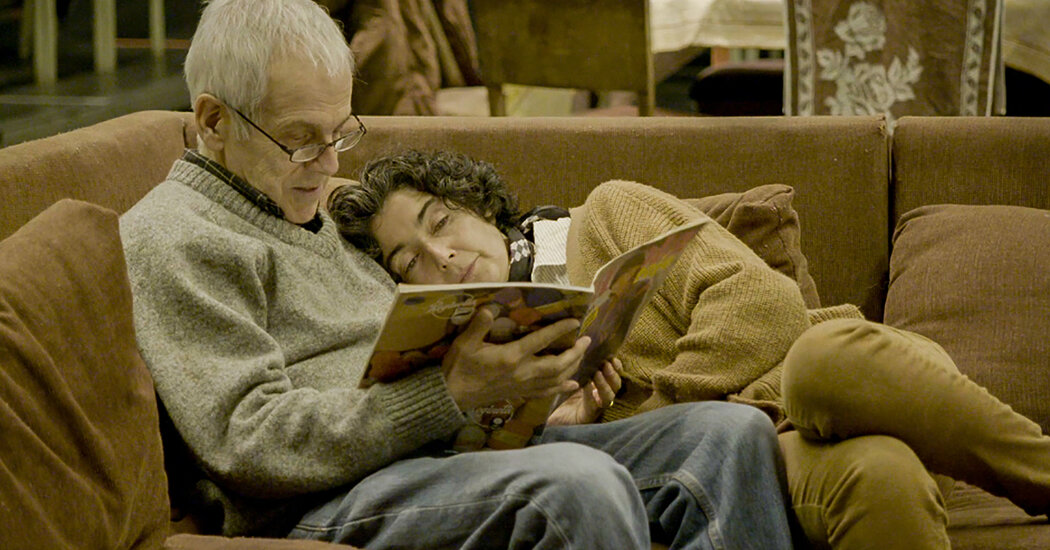Glynis Johns, the British actress who in a transatlantic career that spanned more than 60 years won a Tony Award for her role in “A Little Night Music,” lending a husky, emotion-filled voice to the show’s most memorable number, “Send In.” the Clowns,” and played an exuberant Edwardian suffragette in the classic Disney film “Mary Poppins,” died Thursday in Los Angeles. She was 100 years old.
The death, at an assisted living facility, was confirmed by his manager, Mitch Clem.
Ms. Johns was 49 years old and on the verge of her fourth divorce when Stephen Sondheim’s musical “A Little Night Music” opened at the Shubert Theater in February 1973. The New York Times described her character, Desirée Armfeldt, as “a slightly worldly person.” “Tired and extremely in love actress in Sweden at the beginning of the century.”
Critics loved it. For Clive Barnes of The Times, “Glynis Johns, misty-voiced and bright-eyed, was all tremulous understanding.”
For Walter Kerr, also writing in The Times, she was “that cousin of the bullfrogs and consort of the weary gods”; she was “discreet, dangerous… and gratifyingly funny.”
When she received the award for best actress in a musical at the 1973 Tony Awards presentation, she thanked “the entire company” of the show who “have given me back a joy that I had lost in the theater.”
Before that, she had been better known as a very different type of character. In “Mary Poppins,” Disney’s award-winning 1965 family musical, Mrs. Johns was Mrs. Banks, an enthusiastic wife, mother and political activist in 1910s London.
While her two young children were having adventures with their supernatural nanny, memorably played by Julie Andrews, Mrs. Banks wore a sash that said “Votes for Women” and made plans to “throw things at the Prime Minister.”
Ms. Johns’ easy versatility suggested that she might have been born to act, but it had not been her only passion, as she told The Los Angeles Times in 1991. “I wanted to be a scientist,” she said. “I would have loved to continue and continue at university. But you can’t do everything in life.”
“And I had no choice at that time,” he added. World War II “broke out when I was 16.”
Glynis Margaret Payne Johns was born on October 5, 1923 in Pretoria, South Africa, where her parents, both artists, were on tour.
His father, Mervyn Johns, was a Welsh actor who had a prolific theater and film career in London; He was perhaps best known as Bob Cratchit in the 1951 British film “Scrooge” (released as “A Christmas Carol” in the United States). His mother, Alice Maude (Steele-Wareham) Johns, who was Australian, was a concert pianist who played under the stage name Alyse Steele-Payne.
Glynis studied at the London Ballet School from the age of five. When she made her theatrical debut in the children’s play “Buckie’s Bears” at age 12, she became the fourth generation, on her mother’s side, to pursue a career in theater.
And she grew up on stage. In 1936, she was the troublesome schoolgirl driving the plot of Lillian Hellman’s play “The Children’s Hour.” A year later she played a fairy tale heroine in “A Kiss for Cinderella”; In 1943 she played the lead role in “Peter Pan.”
She made her film debut in “South Riding” (1938) as Ralph Richardson’s daughter. She acted in a war drama, “49th Parallel” (1941), starring Laurence Olivier. In “An Ideal Husband” (1947), she was Oscar Wilde’s flighty and energetic Mabel Chiltern.
When Johns’s films were screened in the United States, they were met with genuine, if faint, praise. Of “Miranda” (1949), a comedy about a mermaid who wanted to see London, Bosley Crowther wrote in The Times: “Glynis Johns is fascinating (at least half of her is) as the shy, flirtatious finned creature.” When she returned in “State Secret” (1950), with Douglas Fairbanks Jr., Crowther found her “very daring and explosive as the music hall girl.”
Exactly when he made his Hollywood screen debut is a matter of opinion. “No Highway in the Sky” (1951), in which she played a soft-spoken, very military-looking stewardess, was a 20th Century Fox film starring James Stewart, but it was filmed in England.
He also made two Disney films abroad that were British co-productions. In “The Sword and the Rose” (1953), she played Henry VIII’s little sister; in “Rob Roy” (1953), the wife of the Scottish freedom fighter.
He appeared in more than a dozen Hollywood films, often displaying aristocratic restraint and rowdy working-class enthusiasm.
Mrs. Johns was a true Southern belle of the early 20th century, fed up with her infuriating husband (Jackie Gleason) in the comedy “Papa’s Delicate Condition” (1963) and a loquacious Australian innkeeper in “The Sundowners” (1960). ), starring Robert Mitchum and Deborah Kerr, and for which she received an Academy Award nomination.
In addition to playing the London suffragette in “Mary Poppins” (1965), she was the comic relief in “The Chapman Report” (1962), a 19th century Scottish immigrant in the drama “All Mine to Give” (1957), The wife of James Stewart in “Dear Brigitte” (1965), a comedy about a math prodigy and an author who has too much fun to finish her book in “Don’t Just Stand There” (1968).
Proud of her Welsh heritage, she appeared in “Under Milk Wood” (1971), a British film version of poet Dylan Thomas’s radio play starring and partly narrated by Richard Burton. Like Myfanwy Price, a dressmaker and sweet shop owner in a Welsh fishing village, she fantasized passionately about the draper from across town.
In “The Ref” (1994), she was Kevin Spacey’s unpleasant mother. In “While You Were Sleeping” (1995), she was the frail grandmother of the hero in a coma. Her last film was “Superstar” (1999), a comedy in which she played the grandmother in charge of Molly Shannon, who ran over a priest in his motorized wheelchair.
On American television, she was a mystery writer in her own short-lived series, “Glynis” (1963), and played Diane Chambers’ well-dressed, chauffeur-driven mother in an episode of “Cheers.” In the 1982 miniseries “Little Gloria… Happy at Last,” she was the mother of Gloria Vanderbilt’s mother, a vibrant flapper of a certain age.
But Johns had begun his career on the stage and returned to it frequently. She made her Broadway debut in “Gertie” (1952), earning favorable reviews (“Quietly humorous in everything she does,” said The Times), but the play closed after five performances.
She won over Broadway audiences as the title character in George Bernard Shaw’s “Major Barbara” (1956), a munitions heiress who works at a Salvation Army shelter, starring Charles Laughton. The Times’ Brooks Atkinson declared the production “a showdown” between Laughton and Shaw, but The Daily News called the comedy “one of the best in many seasons.”
On Broadway, he appeared in a second Shaw play, “Too True to Be Good” (1963), with Lillian Gish.
In London, her stage roles included Anne of Cleves in “The King’s Mare” (1966) and Alma Rattenbury, a famous assassin of the 1930s, in “Cause Célèbre” (1977). In the early 1970s she toured internationally, acting in England, the United States and Australia, in Noël Coward’s romantic comedy “The Marchioness.”
His last appearance on Broadway, opposite Rex Harrison in his last theater production, was in W. Somerset Maugham’s comedy “The Circle” (1989).
Mrs. Johns was married and divorced four times. Her first husband, from 1942 to 1948, was Anthony Forwood, a British actor. She was later married to David R. Foster (1952-56) and Cecil Henderson (1960-62), both businessmen, and finally to Elliott Arnold (1964-73), American writer and novelist.
Their only son, Gareth Forwood, died in 2007. He is survived by one grandson and three great-grandchildren. She was a long-time resident of Los Angeles.
Perhaps it was better that fate had pushed her into show business. In her youth, she said in a 1973 article in The Times, she had “wanted to lead what I considered a ‘normal’ existence, but I soon discovered that I was not as normal outside the theater as I was in it.”
He concluded: “Acting is my highest form of intelligence, the time when I use the best part of my brain.”
Alex Traub contributed reports.












